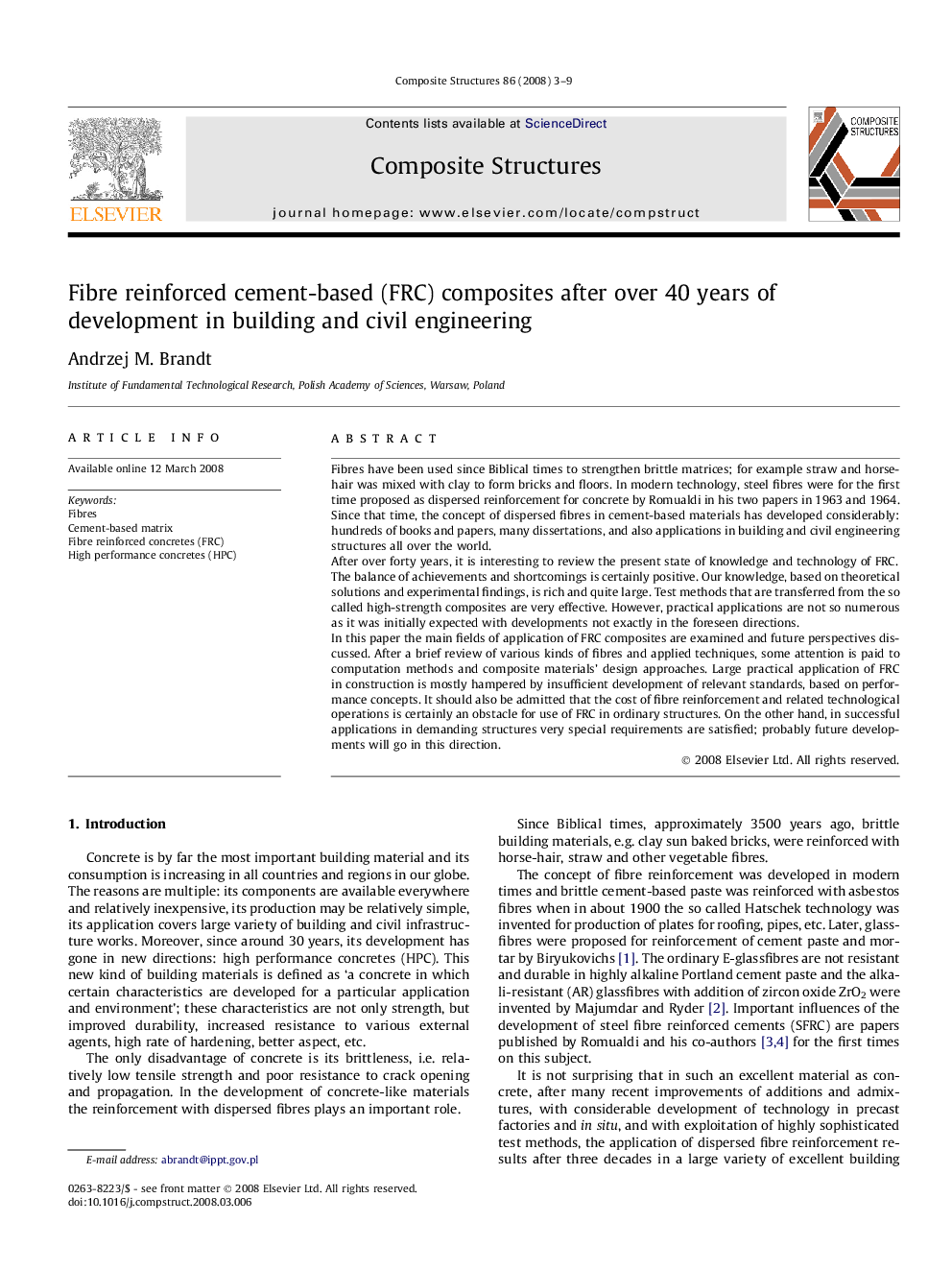| Article ID | Journal | Published Year | Pages | File Type |
|---|---|---|---|---|
| 253290 | Composite Structures | 2008 | 7 Pages |
Fibres have been used since Biblical times to strengthen brittle matrices; for example straw and horse-hair was mixed with clay to form bricks and floors. In modern technology, steel fibres were for the first time proposed as dispersed reinforcement for concrete by Romualdi in his two papers in 1963 and 1964. Since that time, the concept of dispersed fibres in cement-based materials has developed considerably: hundreds of books and papers, many dissertations, and also applications in building and civil engineering structures all over the world.After over forty years, it is interesting to review the present state of knowledge and technology of FRC.The balance of achievements and shortcomings is certainly positive. Our knowledge, based on theoretical solutions and experimental findings, is rich and quite large. Test methods that are transferred from the so called high-strength composites are very effective. However, practical applications are not so numerous as it was initially expected with developments not exactly in the foreseen directions.In this paper the main fields of application of FRC composites are examined and future perspectives discussed. After a brief review of various kinds of fibres and applied techniques, some attention is paid to computation methods and composite materials’ design approaches. Large practical application of FRC in construction is mostly hampered by insufficient development of relevant standards, based on performance concepts. It should also be admitted that the cost of fibre reinforcement and related technological operations is certainly an obstacle for use of FRC in ordinary structures. On the other hand, in successful applications in demanding structures very special requirements are satisfied; probably future developments will go in this direction.
